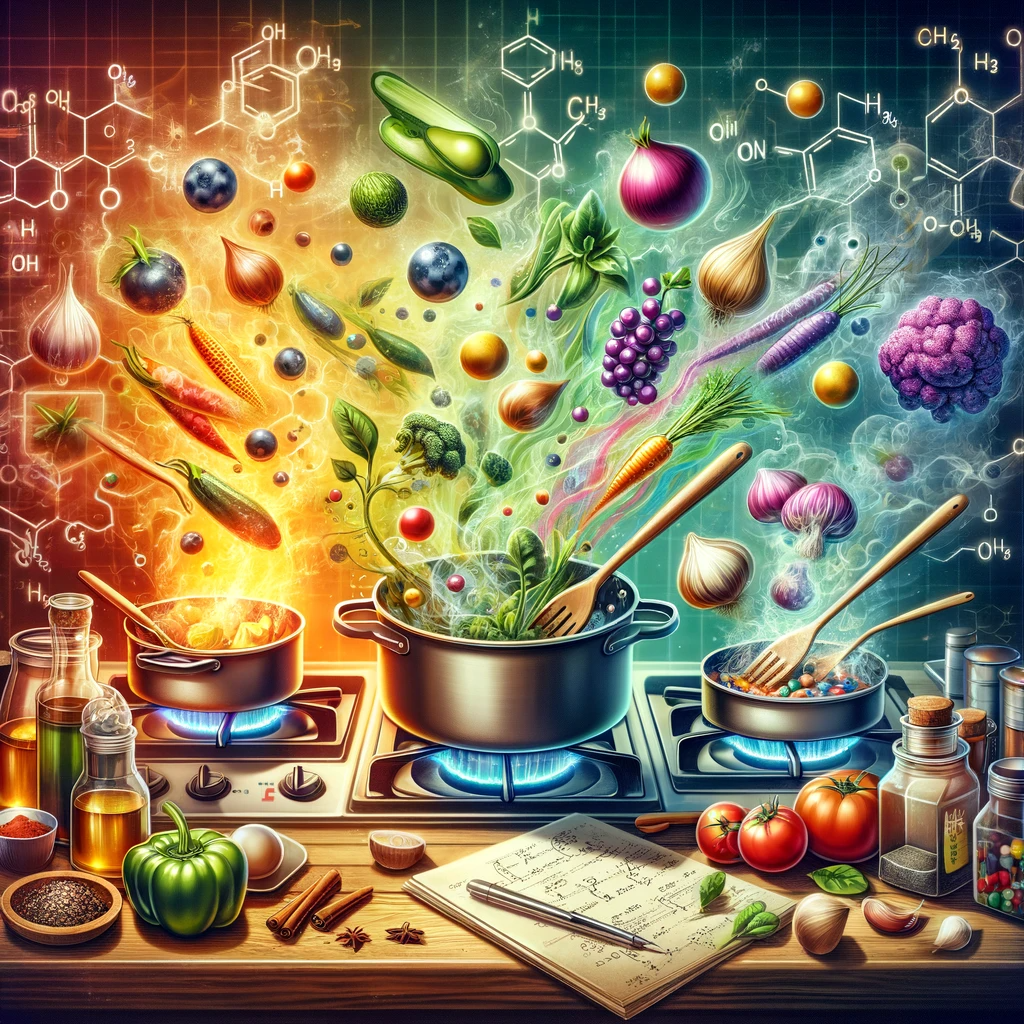Introduction
Cooking is a fascinating blend of art and science. While chefs create mouthwatering dishes with skill and passion, it’s the science of how ingredients transform in heat that truly makes the magic happen in the kitchen. In this article, we’ll dive into the chemistry behind cooking, shedding light on the remarkable changes that occur when you apply heat to various ingredients.
Maillard Reaction: The Secret to Flavor
One of the most captivating chemical reactions in cooking is the Maillard reaction. When ingredients like proteins and carbohydrates are exposed to high temperatures, they undergo a transformation that results in the formation of complex flavor compounds. This reaction is responsible for the golden crust on bread, the seared surface of a perfectly cooked steak, and the delightful aroma of roasted coffee beans.
Proteins Unraveled
Proteins, found in ingredients like meat, fish, and eggs, undergo a fascinating transformation when exposed to heat. The heat causes the protein molecules to denature, unfolding from their natural state. As they continue to cook, these unfolded proteins re-form new bonds, creating a network that gives structure and texture to dishes. Whether it’s the tenderization of a slow-cooked stew or the firming of egg whites into meringue, proteins play a crucial role in the chemistry of cooking.
Caramelization: The Sweet Transformation
Sugar, found in ingredients such as fruits and vegetables, takes center stage during caramelization. When sugar is heated, it undergoes a series of complex chemical reactions, resulting in the browning and sweetening of the ingredient. The rich, golden-brown hues of caramelized onions and the sweet, sticky glaze of caramelized sugar on desserts are both delightful outcomes of this transformative process.
Chemical Changes in Fats
Fats, present in ingredients like butter and oils, also play a vital role in cooking chemistry. When fats are heated, they melt and can reach high temperatures without burning. This characteristic makes them excellent conductors of heat, ensuring that ingredients are evenly cooked. Moreover, fats contribute to the mouthfeel of dishes, giving them a rich and indulgent texture.
The Science of Leavening Agents
In baking, leavening agents such as baking soda and yeast cause ingredients to rise and become airy. This transformation occurs due to the release of carbon dioxide gas when these agents are exposed to heat. The gas gets trapped within the mixture, creating bubbles that result in the light and fluffy texture of bread, cakes, and pastries.
Flavor Development through Heat
The aroma and taste of your favorite dishes also owe a lot to the chemistry of cooking. As ingredients heat up, their volatile compounds evaporate, filling the air with enticing aromas. These compounds, in turn, combine with receptors on our taste buds, enhancing the overall flavor experience. It’s why a slow-cooked stew can be so rich and flavorful, as the ingredients release their savory goodness over time.
Conclusion
Cooking is more than just following recipes; it’s an intricate dance of chemical reactions that transform ingredients into the delicious dishes we love. Understanding the chemistry of cooking can help you become a more skilled and creative chef, allowing you to experiment with flavors, textures, and techniques. So, next time you step into the kitchen, appreciate the science behind the sizzle and simmer, as you watch your ingredients transform into culinary masterpieces.
